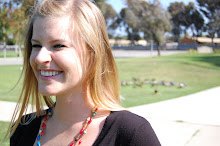This blaper (I decided to call it a blaper. Blog + paper = blaper. Got it? I mean, it could be worse... I could call it a plog. Or a blessay. Or an essog. Oh, the possibilities are endless.) will explore the stories "A Good Man is Hard to Find" by Flannery O'Connor and "Where are you going, Where have you been" by Joyce Carol Oates. This exploration will probably include information on the authors and play with the similarities between the two works, as well as the differences.
First of all: I'll start with Flannery. Why? Because she's got the cooler name. And, unlike my education has taught me to do, I will refer to her by her first name, rather than her last name. Why? Because I want to. And because it's more fun than O'Connor.
(fact: her real name was Mary Flannery O'Connor. People in the South are all about those weird middle names) Isn't she so cute?
Isn't she so cute?
Author bio:
(March 25, 1925 - August 3, 1964)
Born and raised in Georgia
(There's a book called Conversations with Flannery O'Connor, which shares some of the great little tidbits of advice and humor and self-criticism that Flannery shared in interviews.)
"I write every day for two hours, and I spend the rest of my time largely in the society of ducks."
Ah, Flannery. Isn't she the best? She had an affinity for fowl, and I'm not being facetious. She really did. After she got sick with Lupus in 1951 (which her dad died of when she was 15), she moved back to her family farm in Andalusia, Georgia.
I would move there too. I'll bet you it even has a wraparound porch. Sigh.
At Andalusia she took to raising Peafowl. I had no idea what a peafowl was until I wikipediaed it.
 (and then I found out that peafowl are, collectively, peacocks (males) and peahens (females). I've just been calling them all "peacocks" forever. I love wikipedia.)
(and then I found out that peafowl are, collectively, peacocks (males) and peahens (females). I've just been calling them all "peacocks" forever. I love wikipedia.)Some have said that the best American Literature is regional in nature, which may be true. Flannery is certainly a regional author. Much of her inspiration is drawn from Southern life or spirituality (Flannery was a Catholic in a very Protestant area).
I'm having a tough time deciding how much time and effort I want to devote to exploring spirituality in Flannery's works... because you could definitely write a whole thesis on her synthesis (or not) of Catholicism/faith with literature/art.
Flannery's work has been both loved and hated in the Christian and Catholic community. Many question how she can be both so grotesque and disturbing in her writing and yet claim to be a Catholic. Others hail her as a wonderful example of the faith/art debate in writing, fully supportive of Catholicism and also fully supportive of art and truth.
The other main criticism of O'Connor (ok, so the educated side of me took over. I couldn't help it) is that she is "grotesque," but O'Connor just calls it "realist." Like Faulkner, O'Connor sees the more "southern" side of things. The South and the North were still (and, arguably, ARE still) so different. The issue of race and violence with the clash of Protestantism and Catholicism gave Southerners a much more "real" perspective of life. O'Connor argued that, "anything that comes out of the South is going to be called grotesque by the northern reader, unless it is grotesque, in which case it is going to be called realistic" (link).
This quote from O'Connor is so telling of her work:
"Mine is a comic art, but that does not detract from its seriousness."


0 comments:
Post a Comment